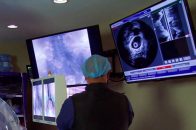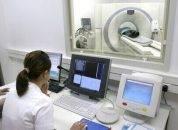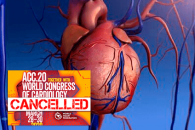This study cites the experience of 6 sites during the first month of the COVID-19 pandemic in New York. All patients included had a confirmed diagnosis of coronavirus infection and also ST-segment elevation on electrocardiography. Eighteen patients met these criteria. We are used to large randomized studies; consequently, this small registry of less than 20 people seems to…
Reperfusion in the Time of COVID-19. What Has Changed?
We are living a pandemic due to the new COVID-19, but the world was already in the midst of a pandemic of cardiovascular disease. Both challenges defy healthcare systems worldwide, and the worst part is that they can coexist. Some symptoms for both diseases can overlap (such as respiratory distress) and they are unreliable, like…
IVUS in Left Main Coronary Artery Angioplasty: Luxury or Necessity?
Technique advancements in left main coronary artery angioplasty have turned this procedure into a reasonable alternative to surgery, particularly in patients with a low or intermediate Syntax score and, obviously, those in whom surgery was contraindicated. Results can be credited to a refinement in technique, better drug-eluting stents, better patient selection, and frequent use of…
Cardiology in Times of Coronavirus: The Perfect Storm
Since January 2020, the COVID-19 infection has spread from China to the rest of the world. The clinical picture has several points in common with influenza, being mild or asymptomatic in most cases. However, around 15% of cases shows complications with interstitial pneumonia that can lead to respiratory failure. Given the lack of vaccine or…
MR vs. FFR in Non-Culprit Lesions
Magnetic resonance (MR) and fractional flow reserve (FFR) correlate moderately as regards the assessment of non-culprit lesions in patients admitted with acute myocardial infarction who underwent primary angioplasty. For a similar degree of diagnostic accuracy, we would require a visual, semiquantitative, or fully quantitative comprehensive assessment of lesions. This work, soon to be published in…
Plaque Morphology Could Modify Functional Measurements
The vulnerable features of plaque are independently associated to functional measurements done under hyperemia far better than baseline measurements such as iFR. These findings suggest that not only stenosis severity but also plaque features contribute to functional measurements. This is a sub-study of the PACIFIC (Prospective Comparison of Cardiac PET/CT, SPECT/CT Perfusion Imaging and CT…
Virtual ACC 2020 | TICO: Ticagrelor Monotherapy in Acute Coronary Syndromes
Switching to ticagrelor monotherapy after 3 months of dual antiplatelet therapy reduces major bleeding without paying a price in terms of ischemic events, compared with dual antiplatelet therapy for a year, in patients who had acute coronary syndrome and underwent angioplasty with a second-generation drug-eluting stent. Interrupting aspirin at 3 months and switching it for ticagrelor reduces…
Virtual ACC 2020 | ISCHEMIA-CKD: Invasive Strategy vs. Medical Treatment in Higher Risk Patients
This pre-specified protocol originally included 777 patients with chronic kidney failure. These patients are a special population of higher risk where we might be able to see the advantage of a more aggressive initial strategy. Death or MI rate (combined primary end point) resulted 36.4% for the invasive strategy vs. 36.7% for the initially conservative…
Virtual ACC 2020 | PRECOMBAT: 10 Years for Surgery vs. Angioplasty in Left Main Coronary Artery Disease
After 10 years of follow-up, there were no significant differences in the rates of major adverse cardiovascular or cerebrovascular events among patients with left main coronary artery disease randomized to angioplasty or surgery. Since this was the first study to randomize patients with left main coronary artery disease to angioplasty or surgery, it enrolled very few…
Virtual ACC 2020 | ISCHEMIA: Quality of Life, Not a Soft Endpoint
In the general study, an invasive strategy followed by revascularization (when necessary) vs. an initially conservative strategy with OMT resulted similar in patients with stable CAD with moderate to severe ischemia. A secondary end point of this analysis were angina symptoms and quality of life. Angina symptoms, functional activity and quality of life were assessed…
Virtual ACC 2020 | Relationship between Ischemia Severity and CAD
The ISCHEMIA trial enables countless sub-studies. Many of them have made part of the virtual ACC 2020, and among them you will find the present study. This analysis finds it is the anatomy — rather than ischemia — which predicts events. And even more interesting is the fact that revascularizing this particular anatomy will not…










